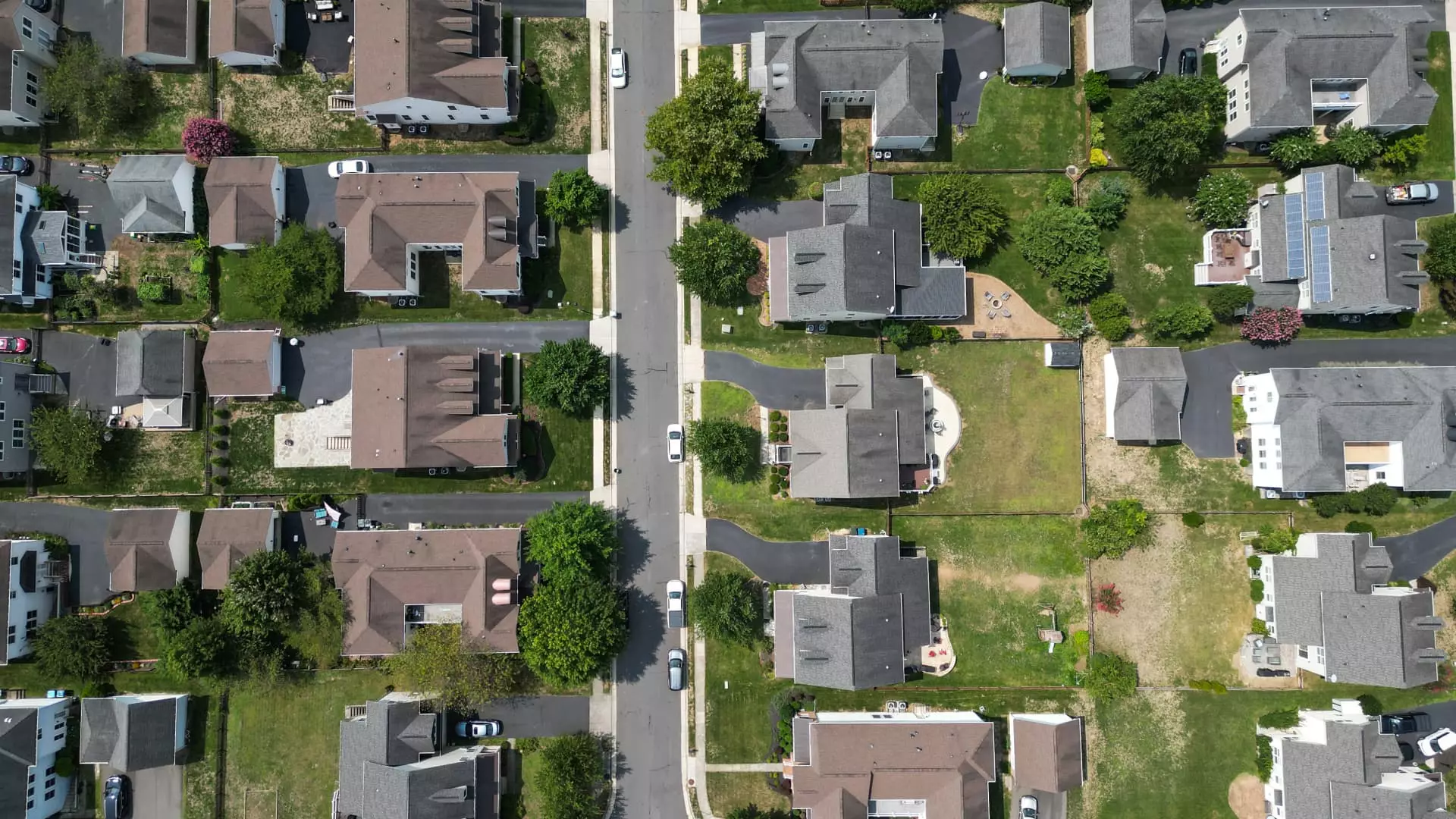Recent shifts in the mortgage market have sent ripples through the housing sector, with mortgage rates hitting their lowest levels since April. This decline has sparked a wave of refinancing activity, signaling a potential shift in homeowner wealth strategies. More than just a routine fluctuation, this offers a glimpse into the intricate dynamics of an economy that’s responding to policy and market forces. Homeowners recognize the opportunity to lock in lower interest costs, which could substantially reduce long-term payments and improve liquidity positions.
However, the cautious optimism should be tempered with understanding of the underlying risks. While refinancing can be beneficial for those with existing loans, it may also serve as a double-edged sword, encouraging homeowners to leverage their properties more aggressively, potentially inflating asset values. The rise in refinance applications—up 7% last week and 40% year-over-year—demonstrates a collective desire to capitalize on these lower rates, but it also hints at increased debt burden and financial vulnerability in a volatile economic environment.
Is This a Sign of Genuine Economic Growth or a Frightening Bubble?
The real debate centers on whether this rate decline reflects genuine economic expansion or if it signals the formation of a dangerous real estate bubble. The context is critical: in many cases, falling mortgage rates are viewed as a healthy correction in borrowing costs, facilitating affordability and encouraging productive investment. Yet, the increased activity—particularly in refinancing—raises concerns about market overheating and speculative behavior.
While some analysts argue that lower borrowing costs can stimulate economic activity, particularly in construction and related sectors, others warn of an overextension. The increase in average loan sizes to over $313,700 suggests that borrowers are leveraging their assets more heavily—potentially pushing house prices upward and creating a distorted housing landscape. If these inflated asset prices are driven more by borrowing than actual demand or income growth, it could lay the groundwork for a fragile market prone to sharp corrections if interest rates reverse or economic conditions deteriorate.
Impact on Homebuyers: Still Standing on Uncertain Ground
Interestingly, despite the rate drop, homebuyer activity remains subdued, with purchase applications hardly budging. The mere 0.1% weekly increase and a 16% rise year-over-year reflect a market still frozen by uncertainty. Factors such as rising living costs, inflation concerns, and broader economic unpredictability seem to outweigh the lure of lower mortgage costs. This suggests that while refinancing activity is surging among existing homeowners, first-time buyers and those looking to upgrade remain hesitant.
This reluctance underscores the complex landscape in which policy, market perception, and economic health intertwine. It reveals that lower mortgage rates alone are insufficient to reignite robust housing demand. Without confidence in economic stability and future income prospects, buyers remain cautious, wary of overextending themselves in a seemingly overheated market.
The Broader Economic Message: A Cautionary Tale for Policy and Market Participants
The continuing decline in mortgage rates, coupled with stable job openings, signals a mixed message for policymakers and investors alike. On one hand, the incentives to refinance could support household resilience, bolster consumer confidence, and sustain economic growth in the short term. On the other, it highlights potential complacency or misplaced optimism, especially if it leads to overleveraging or artificial inflation of asset values.
In a liberal center-right framework, there should be concern about unchecked market exuberance leading to instability. Prudent regulation, transparency, and fiscal responsibility are vital to prevent these rate-driven booms from morphing into crises. This moment offers a critical lesson: interest rate movements, though seemingly beneficial, must be approached with sober analysis about their long-term implications. Otherwise, the housing market risks becoming another example of how imperfect markets can inflate bubbles, only to burst when most households least expect it.

